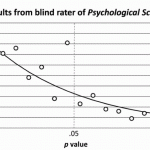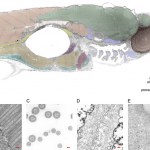Science
I have a new post up over at HuffPo. I discuss, and find wanting, the argument made by Daniel Sarewitz in this op-ed from Nature. Here's a taste:
Sarewitz' argument backfires in that it calls our attention to the key difference between science and religion. It is sometimes said that religion answers questions about meaning and purpose, but this is not accurate. The correct formulation is that religion makes assertions about meaning and purpose. Sorely lacking is any reliable method for establishing the correctness of those assertions. Science's contribution to these conversations is a set…
For the past 3 years, I've had the opportunity to spend a week in a house on a beautiful lake in Vermont. Usually, this week is a chance to completely unplug. I take some photos, buy a bunch of books from Northshire and read them, and lounge around. On this past trip however, I received and e-mail that was equal parts wonderful, exciting and terrifying, offering me an opportunity to teach a course at Emerson College.
The course is SC-214 - Plagues and Pandemics. From the catalogue:
Infectious diseases are a leading worldwide cause of human death. This course will describe and discuss the…
If there's one thing I've been railing about for the last few years, it's how scientific and medical studies are reported in the lay press. It seems that hardly a week passes without my having to apply a little Insolence, be it Respectful or not-so-Respectful, to some story or another, usually as a result of the story having caught my interest, leading me to look up the actual study in the peer-reviewed literature. This is something I've learned the hard way that I have to do, having been burned a couple of times in my early blogging career. Sometimes, even now, I forget. For example,…
A recent meeting of neuroscientists tried to define a set of criteria for that murky phenomenon called "consciousness". I don't know how successful they were; they've come out with a declaration on consciousness that isn't exactly crystal clear. It seems to involve the existence of neural circuitry that exhibits specific states that modulate behavior.
The neural substrates of emotions do not appear to be confined to cortical structures. In fact, subcortical neural networks aroused during affective states in humans are also critically important for generating emotional behaviors in animals.…
During my recent trip to New York I found some time to visit the American Museum of Natural History. I wanted to see their spider exhibit, you see.
Of course, step one was finding the place. Seventy-eighth and Central Park West, as I recall. Ah, this looks right:
The exhibit itself was a bit smaller than I had expected. I went through it in forty-five minutes, and that was after reading every sign and watching every video. The place was also overrun with screaming, squealing little kids, so that marred things a bit for me as well. But it was still fascinating and I'm glad I went.…
It's been a long time, been a long time, been a long lonely, lonely, lonely, lonely time.
Well, not really, although it has been a while since I've discussed Dr. Stanislaw Burzynski. Specifically, I last dedicated a post to him following the death of one of his famous patients, Billie Bainbridge, who incidentally had become famous because her family had managed to raise hundreds of thousands of pounds with the help of some U.K. celebrities. Burzynski, as regular readers will recall, became a frequent topic on this blog last fall after one of his lackeys decided to issue vacuous legal threats…
Mining the Astronomical Literature - yes, just ADS not the Asteroids, yet.
Shamelessly cribbed from a thread on the fb Astronomers group
In defence of string theory - rather good post by Matt Strassler
Claim that founding node of networks can be efficiently localized by sparse sampling
Don't Confuse Technology With College Teaching - from the Chronicle
Kepler 11: A Six-Planet Sonata from Alex Parker on Vimeo.
"New Particle Physics at the LHC and Its Connection to Dark Matter" is the name of the current workshop at the Aspen Center for Physics running through Sep 9th.
I'm hanging out for the first few days and the first presentation is on "what has the LHC Higgs done to supersymmetry"?
So, basic point is that supersymmetry sort of predicts that the Higgs mass (125 GeV) should be close to the Z mass (91 GeV), up to some corrections. So the mass corrections can be parametrised in perturbative theory, and how do you nail a ~ 30% correction and keep everything natural?
We talk about our feelings.
We…
Choose what the VLT observes - public vote on a science target one night this autumn
Ralph Cicerone Public Lecture - Contemporary Climate Change as Seen through Data - video of Ralph Cicerone lecture on Climate Change at the Aspen Center for Physics this summer
Cliff at Asymptotia summarises the "Future of Physics" public symposium at the Aspen Center for Physics.
With bonus pics of physicists gone wild!
How did I miss this?! - the Definitive Dunkin' Donuts study on which professions need coffee the most...
"scientists/lab technicians are the professions that need coffee the most,…
There is a magic and arbitrary line in ordinary statistical testing: the p level of 0.05. What that basically means is that if the p level of a comparison between two distributions is less than 0.05, there is a less than 5% chance that your results can be accounted for by accident. We'll often say that having p<0.05 means your result is statistically significant. Note that there's nothing really special about 0.05; it's just a commonly chosen dividing line.
Now a paper has come out that ought to make some psychologists, who use that p value criterion a lot in their work, feel a little…
As the last full weekday of my vacation passes, I thought about whether I'd bother to post anything or not, given that I happen to be traveling. After yesterday's post, the subject of which was profoundly depressing to me because I hate it when quacks take cynical advantage of a grieving family to promote their antivaccine agenda, I thought I'd post something a bit more positive.
Nearly a month ago, I attended TAM, presenting there at one of the workshops and taking part in a panel discussion of "integrative medicine" (i.e., "integrating" quackery with real medicine). Leaving aside the…
I'm getting a bit peeved at all this new technology. Why, back in the day when I was doing electron microscopy work, I'd spend days slicing up tiny fragments of zebrafish embedded in epon-araldite with an ultramicrotome, and I'd end up with hundreds of itty-bitty copper grids that I'd put in the EM one by one, pumping the chamber down to a good vacuum and scanning and focusing and taking pictures. On a film cartridge! That I had to take into a darkroom and process myself! Both ways, uphill, in the snow!
And now look at this. These guys can make a single thin section slice of the whole larva…
Last talk of the LHC Shows the Way workshop, with the most provocative title.
Entries in this post may or may not be mangled misrepresentations of stuff the speaker made up just to be provocative...
Starting point: there is something at ~ 125 GeV and it is consistent with a boson, possibly a scalar, and quite likely a standard model Higgs boson.
Agreed.
Preliminary results for CMS experiments show branching ratio to ττ decay mode a little bit lower than normal.
ATLAS initially did simple crude analysis of this channel.
Now redone with more data and better technique.
ATLAS expect to make…
The LHC Shows the Way workshop is about to end, and the slow live blog limps along with a presentation on the composite Higgs.
A model for having a light (~ 100 GeV ) scalar, is to have a composite Higgs instead of the alternative of either a true supersymmetric model or a light dilaton scalar.
As with such models in general, they violate unitarity if extrapolated to higher energies, so force a new energy scale, at, say, few TeV - like another particle there (cf old effective weak interaction theory).
Yes, if you work it out in detail, the effective coupling runsaway and you need to truncate…
I must admit, I've been enjoying my vacation thus far and have hardly paid attention to the blog, other than a couple of quick posts. For me, this is quite amazing. Still, every so often there pops up a story that I can't resist commenting on, particularly given that I'm just sitting around watching the Olympics, and I'm deadly tired of beach volleyball. (As an aside, notice how it's always women's beach volleyball that NBC shows, not men's, no doubt because the powers that be think that toned young women in bikinis playing volleyball translate into big ratings. Unfortunately, they seem to be…
Back at the LHC Shows the Way workshop at the Aspen Center for Physics - more discussion of Higgs alternatives and peculiar branching ratios.
No, the branching ratios for the different decay modes of the 125 GeV boson that is putatively the Higgs are not anomalous at a statistically significant level, but, they are off a bit.
So, theorists go wild with ecstatic speculation - it is fun and not yet ruled out by data, what else can we do!
This morning Fan on 2:1 for Naturalness at the LHC? by Nima Arkani-Hamed, Kfir Blum, Raffaele Tito D'Agnolo, JiJi Fan
Later there will be discussion on jet…
One of the consistent themes I've maintained on this blog over the years is to combat in my own small way in my own small corner of the Internet, the influx into medical academia of medicine based not on science, but on prescientific notions of disease, vitalism, and magic, such as homeopathy (which is sympathetic magic), reiki (which is faith healing), and the like. In general, we expect professional societies to maintain and support the scientific basis of medicine. Unfortunately, increasingly, medical societies have been failing us.
Here's just a short reminder of yet another example. This…
Large Fluctuations and Collective Behavior in Solids is an overlapping workshop going on in parallel with the LHC stuff at the Aspen Center for Physics, while down the road the Republican Governors' meet at the Aspen Institute and Romney is down the valley while his peeps meet with the super PACs over lunch.
The kickoff colloquium for the Collective Behaviour crowd is from Bouchard on Fracture Physics.
Nice reminder that much of physics is not about Higgs bosons or speculations on supersymmetry. Also good reminder that superficially applied problems have deep issues of universality and…
In which we ask, what would you do if you could change your own personal history?
A Kind of Magic! - No, that is not a non-Higgs boson, it is the Astronomy Magazine competition to win a signed copy of Brian May's PhD thesis in astronomy.
"To enter the contest, submit a short essay (200 to 500 words) that describes what you would do — what would your subject be and why? — if you could magically go back to school and earn a doctoral degree in astronomy.
How would you change the astronomy world? What research subject would entice you? Planetary science? Cosmology? Galaxy investigations? And what…
Back at the LHC Shows the Way workshop and slow live blogging of the discussion, with random asides for other stuff...
Astronomy Magazine has a contest - win Brian May's PhD thesis! - now separate post with added bonus question
Today:
fake Higgs - are there some new bosons which are not Higgs, but which look like Higgs. Specifically looking at other scalar or pseudoscalars, or the possibility of spin-2 tensor particles.
Aside: cool 2D fluid flow web site - GPU powered 512k sim run live through WebGL - hypnotic turbulence to crash your browser
Look for general models where some particle…


